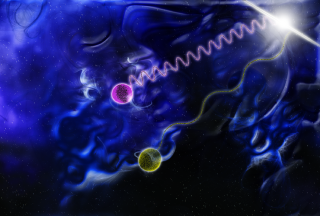Fermi Provides Glimpse of Space-Time
Posted: Thu Oct 29, 2009 6:59 pm
Fermi Telescope Caps First Year With Glimpse of Space-Time
NASA Mission News - Fermi - 2009 Oct 28
NASA Mission News - Fermi - 2009 Oct 28
During its first year of operations, NASA's Fermi Gamma Ray Space Telescope mapped the extreme sky with unprecedented resolution and sensitivity.
It captured more than 1,000 discrete sources of gamma rays -- the highest-energy form of light. Capping these achievements was a measurement that provided rare experimental evidence about the very structure of space and time, unified as space-time in Einstein's theories.
"Physicists would like to replace Einstein's vision of gravity -- as expressed in his relativity theories -- with something that handles all fundamental forces," said Peter Michelson, principal investigator of Fermi's Large Area Telescope, or LAT, at Stanford University in Palo Alto, Calif. "There are many ideas, but few ways to test them."
Many approaches to new theories of gravity picture space-time as having a shifting, frothy structure at physical scales trillions of times smaller than an electron. Some models predict that the foamy aspect of space-time will cause higher-energy gamma rays to move slightly more slowly than photons at lower energy.
Such a model would violate Einstein's edict that all electromagnetic radiation -- radio waves, infrared, visible light, X-rays and gamma rays -- travels through a vacuum at the same speed.
On May 10, 2009, Fermi and other satellites detected a so-called short gamma ray burst, designated GRB 090510. Astronomers think this type of explosion happens when neutron stars collide. Ground-based studies show the event took place in a galaxy 7.3 billion light-years away. Of the many gamma ray photons Fermi's LAT detected from the 2.1-second burst, two possessed energies differing by a million times. Yet after traveling some seven billion years, the pair arrived just nine-tenths of a second apart.
"This measurement eliminates any approach to a new theory of gravity that predicts a strong energy dependent change in the speed of light," Michelson said. "To one part in 100 million billion, these two photons traveled at the same speed. Einstein still rules."
